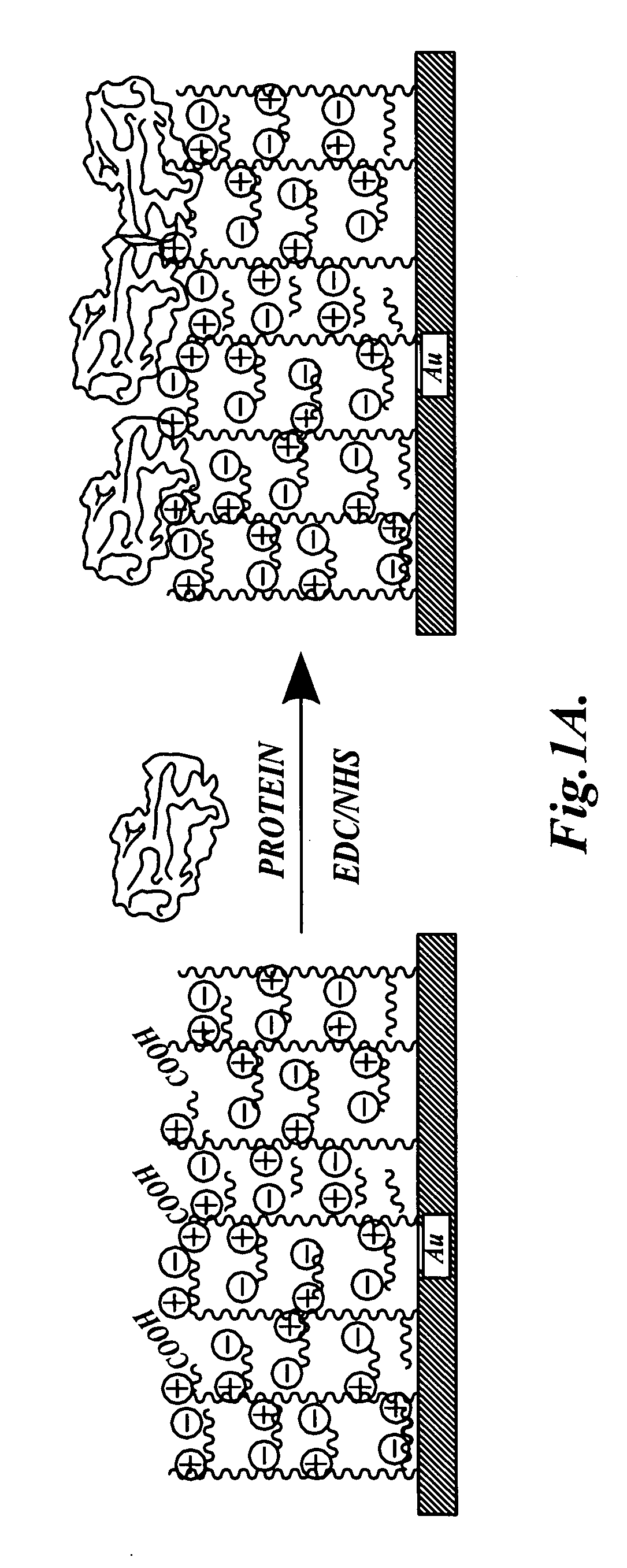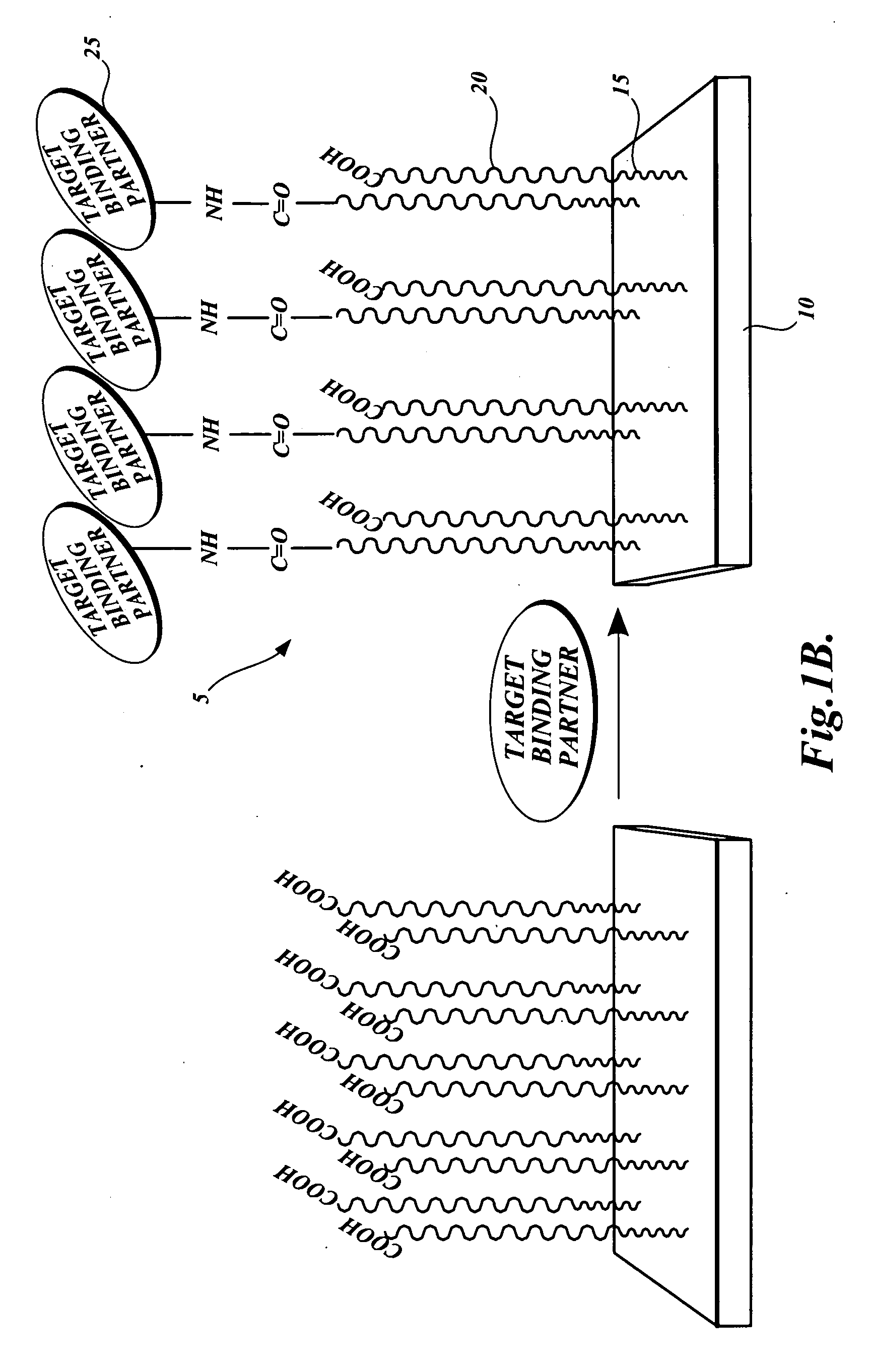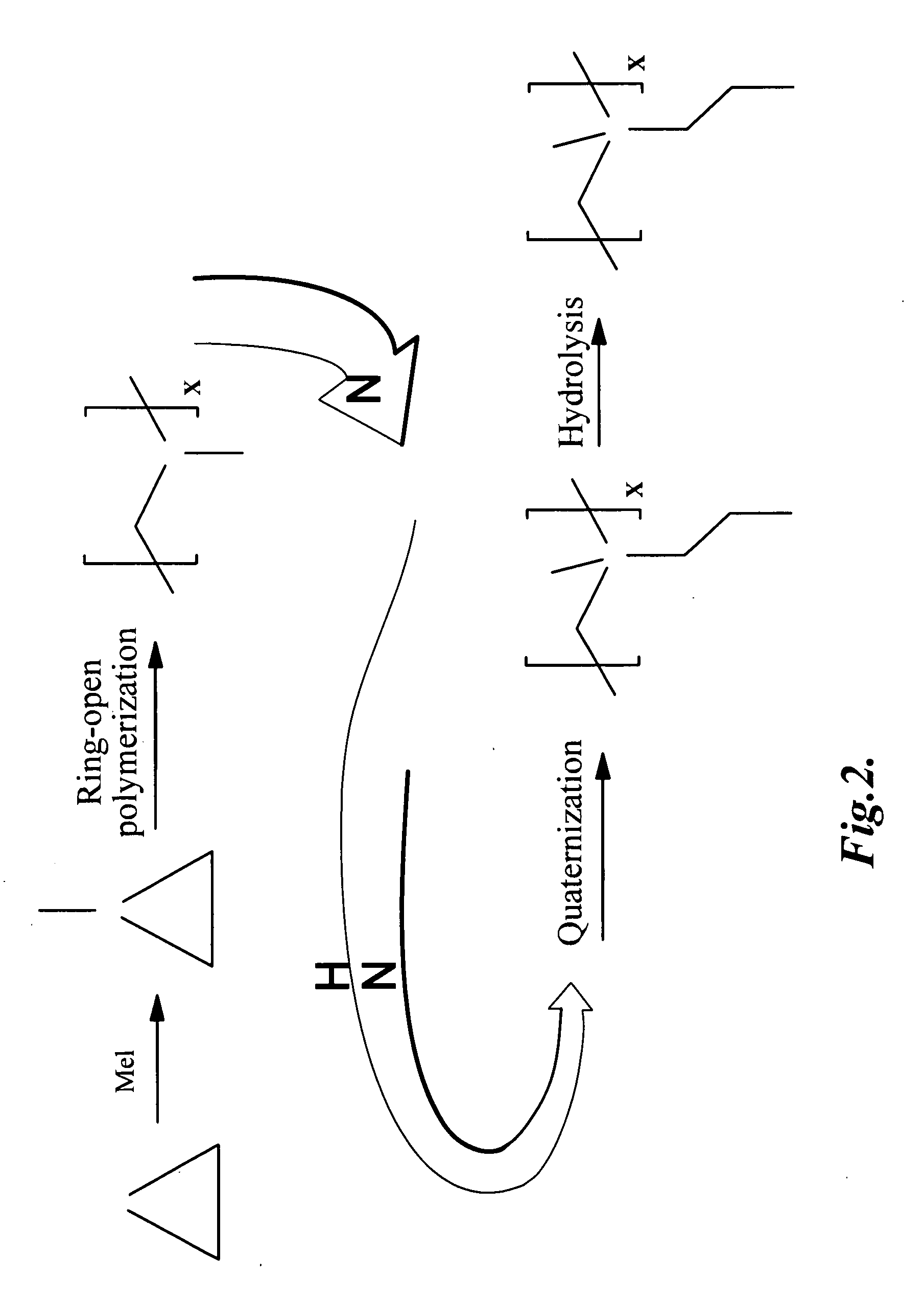Dual-functional nonfouling surfaces and materials
a non-fouling surface, dual-functional technology, applied in the field of dual-functional non-fouling surfaces and materials, can solve the problems of inability to achieve the specificity of a sensor or the biocompatibility of a biomaterial, and the inability to react with extra (or unreacted) functional groups,
- Summary
- Abstract
- Description
- Claims
- Application Information
AI Technical Summary
Benefits of technology
Problems solved by technology
Method used
Image
Examples
example 1
Representative Dual-Functional Surface Having Nonfouling Poly(CBMA) Coating
[0169]Human plasma fibrinogen and chicken egg white lysozyme were purchased from Sigma-Aldrich (Milwaukee, Wis.). Human plasma fibronectin was purchased from Chemicon International (Temecula, Calif.). Human chorionic gonadotropin (hCG) and its monoclonal mouse antibody (isotype IgG1) were purchased from Scripps Laboratories (San Diego, Calif.). 2-(N,N′-dimethylamino)ethyl methacrylate (DMAEM, 98%), β-propiolactone (95%), copper (I) bromide (99.999%), bromoisobutyryl bromide (98%), 11-mercapto-1-undecanol (97%), 2,2′-bipyridine (BPY 99%) and tetrahydrofuran (THF HPLC grade), N-hydroxysuccinimide (NHS) and 1-ethyl-3-(3-dimethylaminopropyl)-carbodiimide (EDC), were purchased from Sigma-Aldrich (Milwaukee, Wis.). Phosphate buffer saline (PBS, 0.01 M phosphate, 0.138 M sodium chloride, 0.0027 M potassium chloride, pH 7.4) were purchased from Sigma Chemical Co. Ethanol (absolute 200 proof) was purchased from AAPER ...
example 2
Optimization of Target Binding Partner Immobilization for a Representative Poly(CBAA) Coated Surface
[0180]Optimal activation of carboxylates using NHS / EDC method was achieved in situ using water / HCl, pH3.3 as a solvent. Briefly, the polymer surface was activated by injection of freshly prepared solution of NHS (0.05M) and EDC (0.2M) for 10 minutes at temperature of 30° C. Two different antibodies, in particular monoclonal antibody against activated cell leukocyte adhesion molecule (anti-ALCAM) and polyclonal antibody against Salmonella (anti-Salm) were immobilized into different spots of the activated poly(CBAA) coated surface under various pH conditions with antibody concentration of 50 ug / mL. The flow rate was 50 ul / min, T=30C and incubation time was about 15 minutes. After that, the surface was treated with 10 mM PB, 0.75M NaCl, pH 8.8 (PBNa) to remove all non-covalently bound ligands. Effect of pH of running buffer on antibody immobilization is shown in FIG. 7. A typical respons...
example 3
Representative Sensors with Dual-Functional Surface Coated with Poly(CBAA) and Activated with TSTU
[0181]A SPR sensor with a dual-functional surface based on nonfouling poly(CBAA) coating functionalized using the TSTU method was accomplished in this example. A custom-built four-channel spectroscopic surface plasmon resonance sensor was used to monitor poly(CBAA) surface functionalization.
[0182]Poly(CBAA) chips were first prepared in the form of Poly(CBAA) esters via ATRP method. The poly(CBAA)-ester surface is then hydrolyzed to achieve zwitterionic nonfouling poly(CBAA) surface. A sensor chip surface with grafted poly(CBAA) esters was washed with MilliQ water, dried with filtered air and mounted into the SPR sensor. The hydrolysis was performed in situ by flowing with 0.1M NaOH, pH 12 for 2 hours along the poly(CBAA) surface. The effectiveness of hydrolysis was checked by injection of highly surface-sticking protein (fibrinogen) with concentration of 1 mg / mL in phosphate buffered sa...
PUM
| Property | Measurement | Unit |
|---|---|---|
| Hydrophilicity | aaaaa | aaaaa |
| Affinity | aaaaa | aaaaa |
Abstract
Description
Claims
Application Information
 Login to View More
Login to View More - R&D
- Intellectual Property
- Life Sciences
- Materials
- Tech Scout
- Unparalleled Data Quality
- Higher Quality Content
- 60% Fewer Hallucinations
Browse by: Latest US Patents, China's latest patents, Technical Efficacy Thesaurus, Application Domain, Technology Topic, Popular Technical Reports.
© 2025 PatSnap. All rights reserved.Legal|Privacy policy|Modern Slavery Act Transparency Statement|Sitemap|About US| Contact US: help@patsnap.com



